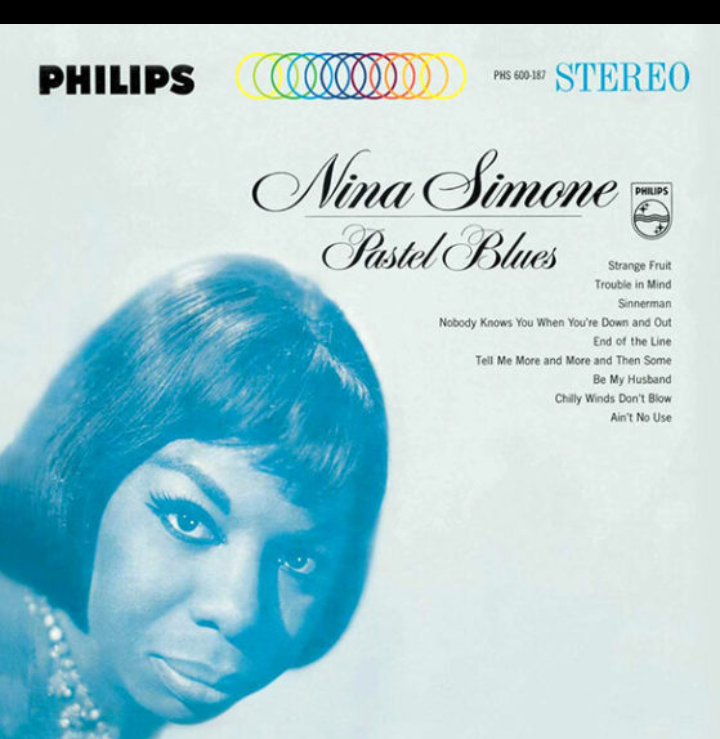
The Beastie Boys and Me
Published on Dec 10, 2025
The Doors and Me
Published on Dec 8, 2025
Hold the Line: a breakup story starring Toto
Published on Dec 3, 2025
Letter From the Publisher
Published on Nov 29, 2025
More Liner Notes…
Featured Essay: The Record That Taught Me to Pray: How Nina Simone Became My Thanksgiving Religion
by Tracy Miller

When I was a kid, Thanksgiving wasn’t about turkey or mashed potatoes. It wasn’t about the cranberry sauce or the football game on TV. Thanksgiving was about music. Every year, my aunt would pull out her worn copy of Nina Simone’s Pastel Blues, carefully lifting it from its sleeve, and before anyone had touched a fork, she’d set the needle down and let the record spin.
We didn’t pray with words. We prayed with her voice. Her trembling, aching notes filled the living room with everything we didn’t know how to say: grief, resilience, longing, love, and the quiet weight of generations. I would sit cross-legged on the carpet, tracing the grooves with my eyes, mesmerized by the black, shiny spiral, and feel the music teach me more about survival, history, and tenderness than any sermon or story ever could.
I didn’t understand it at the time, but those sessions were lessons in the sacred. Nina Simone’s voice was a vessel of memory and emotion, a way to honor ancestors whose names we whispered but whose stories were too heavy to carry aloud. When she sang about heartbreak, injustice, and longing, I felt the echoes of lives I hadn’t lived but somehow knew. I learned that grief could be beautiful, that sorrow could be sacred, and that music could hold multitudes.
Thanksgiving, for us, became less about the meal and more about ritual. My aunt would close her eyes, fingers hovering above the keys of the piano, and we would follow her lead. We didn’t need hymns or prayers. There was no altar, no incense, no bells. Just Nina, just the crackle of vinyl, and the quiet reverence in our hearts. By the time the turkey came out of the oven, we had already been transported.
There was something almost magical about watching my aunt disappear into the music. Her head tilted slightly, a tremble in her hands as she lifted her coffee cup, and I could see her entire life, her struggles, her joys, and the weight she carried as a Black woman, in her expression. And yet, she made space for all of us in that moment: me, my cousins, my mother, all of us learning to bear witness to the power of a voice that could hold so much and still break our hearts open.
I remember the smell of the living room that day: old books, polished wood, a hint of pumpkin spice. I remember the way my mother’s hand found mine, squeezing it tightly during “Sinnerman,” as if we were tethered to something far larger than ourselves. And I remember thinking, with the clarity only a child can have, that this aching, beautiful music was holy.
It wasn’t just music; it was history, memory, and identity all folded into a single, fragile record. Nina Simone’s songs carried the weight of African American life—the pain of oppression, the fierceness of resilience, the quiet dignity of those who loved despite everything. And in our little living room, on a suburban Thanksgiving, that history became personal. It became intimate. It became ours.
Years later, when my aunt passed away, I inherited that record. I keep it in a small wooden crate alongside her other treasures, still worn at the edges, still marked with the faint fingerprints of generations. I’ve taken it out countless times, especially on Thanksgiving, and each time, pressing the needle down feels like pressing my hand into her palm. It’s a ritual that transcends time, a reminder that we carry our histories and our hearts in ways that words often fail to capture.
I’ve come to realize that this record taught me something that no classroom or lecture ever could. It taught me that spirituality can exist in unexpected places, that prayer can take the form of listening, and that the sacred can live in art, in music, in human connection. There is a kind of reverence in the act of leaning in, of opening yourself to something larger than yourself without knowing exactly why. That’s what we did every Thanksgiving, without thinking about it. And now, decades later, I understand that it was more than ritual—it was initiation.
Music has a way of doing this, of translating the unspeakable into something tangible. In the case of Nina Simone, it’s not just the beauty of her voice; it’s the raw, unflinching honesty she carries in every note. She asks us to feel, to remember, to confront both joy and sorrow simultaneously. And when I press Pastel Blues to the turntable, I still feel the same way I did as a child: small and infinite all at once, tethered to something far larger than myself.
I don’t think of Nina Simone’s music as mere entertainment. I think of it as a language of survival. A way to carry forward grief without letting it crush you. A way to honor love without losing yourself. A way to be present to history while still creating your own story. My aunt knew this instinctively, and through her, I learned it too.
Thanksgiving, in our family, is still about more than the food. It’s about listening. It’s about honoring the past while creating space for the present. It’s about finding the sacred in ordinary moments, in the crackle of a record, in the silence between notes, in the warmth of a living room filled with people who care enough to listen. And every year, when I place that needle on the vinyl, I am reminded that spirituality is not confined to churches or temples. Sometimes, it lives in a voice that pierces through decades, a family that knows how to hear, and a record that teaches you how to pray without saying a word.
This is my Thanksgiving religion: one of reverence, memory, and music that teaches us how to be human, fully and tenderly, in the midst of our lives. It is a ritual I carry with me wherever I go, one that reminds me that home is not a place, but a feeling. It is the ache and the beauty of Nina Simone’s voice, the hands of my aunt guiding me through it, and the quiet realization that prayer is, sometimes, simply listening.
Tracy writes personal essays that blend nostalgia, culture, and emotion.

